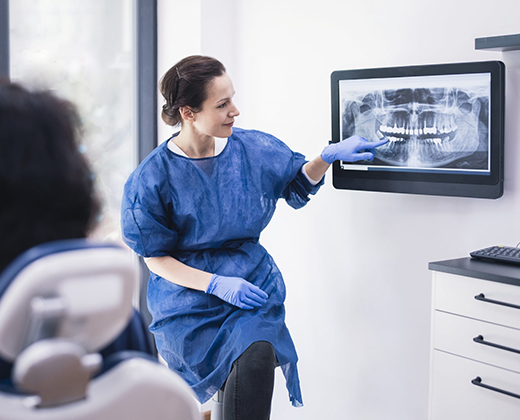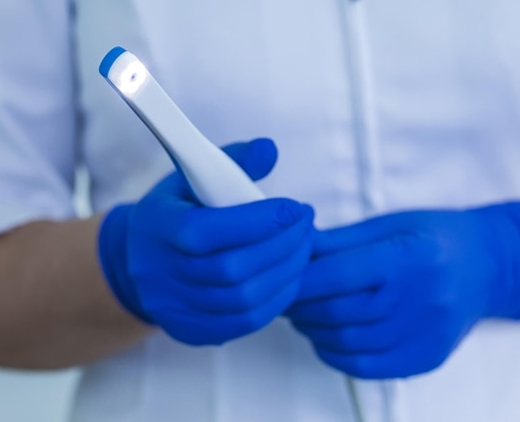Call Us Today : (757) 596-6850
Digital Radiographs
Here at Covaney & Covaney Dental, in Newport News, VA, digital radiographs (x-rays) are an essential diagnostic tool for dental professionals. While traditional film radiographs provide critical insight into the oral and physical health of the patient, digital radiographs allow dentists to view and enhance dental images on a large computer screen.
Dentists can also copy or print digital radiographs with ease. This allows for effectively comparing new results to previous images and provides insight to how treatments have impacted dental conditions. If the dentist refers the patient to a specialist, digital radiographs can be transmitted via computer, eliminating the need for a second set of X-rays in many cases.

Why Use Digital Radiographs?
One of the most significant advantages of utilizing digital radiographs here at Covaney & Covaney, in Newport News, VA, is reducing radiation exposure. Digital radiographs also eliminate the use of film and required chemicals for processing, making the overall procedure much less harmful to the environment and are more efficient.
The larger computer screen used to display digital radiographs allows dentists to view any problems or irregularities with added clarity. As a result, the potential for early detection of decay or periodontal problems and reducing complicated conditions later is vastly increased. Sharing dental x-rays on a large computer screen also allows for patient education.
Your dentist and dental hygienist will recommend necessary x-rays based on the review of your medical and dental history, dental exam, signs and symptoms, age consideration, and risk for disease. The different types of radiographs utilized at Covaney & Covaney Dental are full mouth series, panorex, bitewings, and periapical films.
A paronex and full mouth series of dental x-rays are recommended for new patients and then alternated every 3 years.
X-rays are extremely versatile in dentistry and are used to:
Detect decay and bone loss
Detect oral cancer
Evaluate the Temperomandibular Joint (TMJ) for pathology
Diagnose and evaluate cysts and abnormalities
Diagnose and evaluate impacted teeth/wisdom teeth
Plan treatment (implants in particular)

Intraoral Cameras
In addition to digital x-rays, intraoral cameras are used as another tool to assist in the way we diagnose and treatment plan patients. The intraoral camera gives the patient a unique view of each tooth - enabling them to understand diagnoses and make informed treatment decisions.
How can the intraoral camera help?
Utilizing intraoral cameras is a completely comfortable process for patients and allows the patient to see what the dentist is seeing.
Dental education – Education and preventive care are vital in dentistry. The intraoral camera can expose areas where home hygiene may be deficient. Any problems can then be resolved before complicated treatments are required.
Exposing hidden problems – Conditions like gum disease and oral cancer may display easy-to-miss symptoms in their earliest stages. The intraoral camera can highlight these issues to the dentist and the patient more clearly.
Treatment planning – No matter how well a dentist might describe a condition, it is easier to understand the issue if it can be seen. Seeing tooth decay and problem teeth helps patients understand why specific treatments are recommended.
